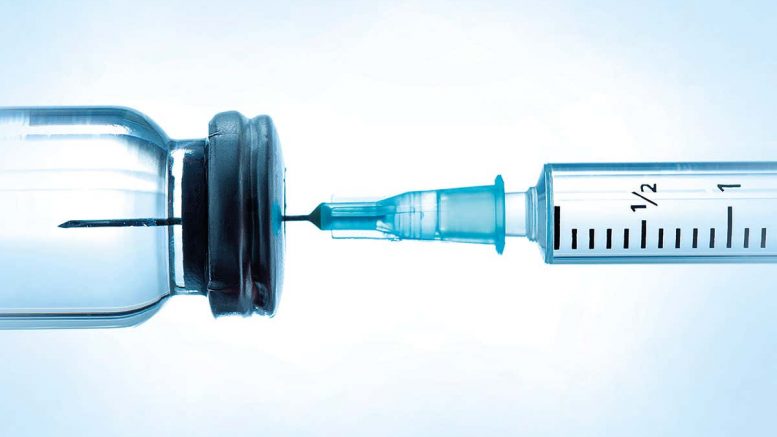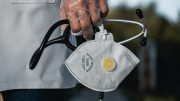COVID-19 has upended life as we know it. The potential effect of this viral disease on mortality and public health, as well as the lasting socioeconomic repercussions of the crisis, is still unfathomable.
To mitigate the wide-scale impact of this growing pandemic, our hopes are trained on a vaccine, prophylactic or curative, and the life sciences industry that is working on producing it.
The development and production of new vaccines and medicines is a time-consuming process. And the impact of coronavirus has demonstrated just how vital time is when it comes to creating a viable vaccine in the face of a pandemic. The key question is, how can we utilise modern digital technologies to accelerate the development of new therapies and enable the earliest possible access to promising, potentially life-saving, new treatments, while remaining as safe and thorough as required?
Ultimately, the process of randomised clinical trials (RCTs) during drug development needs to be re-evaluated. Current practices are too slow for acute states of emergency, such as during the ongoing COVID-19 crisis. Instead, we can accelerate the analysis of the efficacy and safety of specific drugs that have demonstrative potential by looking in real time at real world evidence/data (RWE/D). This can materialise in a number of ways.
Using technology for speed and efficiency
Accelerated studies should happen under the umbrella of a simplified, pragmatic RWE study. Patient data should be collected and continuously monitored and analysed in almost real time from electronic health records and electronic medical records (EHR/EMR).
Digital technology has evolved to the point where, in a global health crisis like this, it allows us to react quickly, efficiently and for a large number of patients. Today, there are platforms and technologies available that can provide real-time insights into data across provider networks, combining real-time access to longitudinal clinical data with analytics and advanced visualisation capabilities.
Alongside this, the development of algorithms can also be a vital tool in helping to query the data for novel insights. This could ultimately lead to discoveries in how to treat the virus and, perhaps equally likely, provide insights into the next viral disease or bacterial pathogen that will upend modern life as we know it.
Remote patient monitoring
Another technology option in a health crisis is electronic patient reported outcomes. In the case of COVID-19, it is deemed that the majority of afflicted individuals exhibit mild symptoms and may be under self-quarantine. While they may be unable to visit clinics and record clinical data for obvious reasons, they can easily use mobile apps for reporting clinical outcomes, such as simple measurements like the severity of a cough and fluctuations in temperature.
Remote monitoring can then be easily orchestrated to support vaccine efforts through this real-time data collection. This provides vital data streams for clinical analysis and avoids the protracted rigmarole of setting up new investigator sites and traditional means of patient recruitment.
For example, in the UK, the NHS is working with Huma to provide remote monitoring for coronavirus patients who are in quarantine and so cannot attend in-person appointments. This is a great example of how technology is helping healthcare organisations to combat the pandemic by being able to provide care remotely, collect real-time insights, and overcome the challenge of not being able to meet patients face-to-face.
Adapting to quickly evolving circumstances
Recent advances in digital engineering allow for mobile apps to be deployed and updated within days, meaning RWE studies can be deemed not only real-time, but also adaptive. It is possible to set up visual command centres for pandemics. For example, data streams from EMR systems and electronic clinical outcome assessment apps could come together from across the country to provide a daily/weekly snapshot of how the infected patient population is reacting to potential treatment for COVID-19. The whole system could be set up as an integrated research platform using umbrella designs where new treatments are seamlessly added, while ineffective ones are removed, determining safety and effectiveness in real time and moving closer to successful treatments.
It is time for change
Regulations for drug and vaccine development have evolved and may be apt for treatments such as psoriasis, hyperlipidaemia — in essence, diseases whose progressions are incomparable to that of a pandemic.
In a globalised society, we need to have a regulatory framework that enables the industry to switch to operating in emergency mode with accelerated decision making, drug testing and development in the wake of pandemics situations. We need to act at the speed of viral replication. In order to protect humanity from future pandemics, we need to have a new regulatory framework that allows us to develop, study, and test new promising compounds in a matter of weeks, rather than in months or years. Using real-time data is our best chance at getting there.
By Srinivas Shankar, Global Head, Life Sciences, Cognizant





